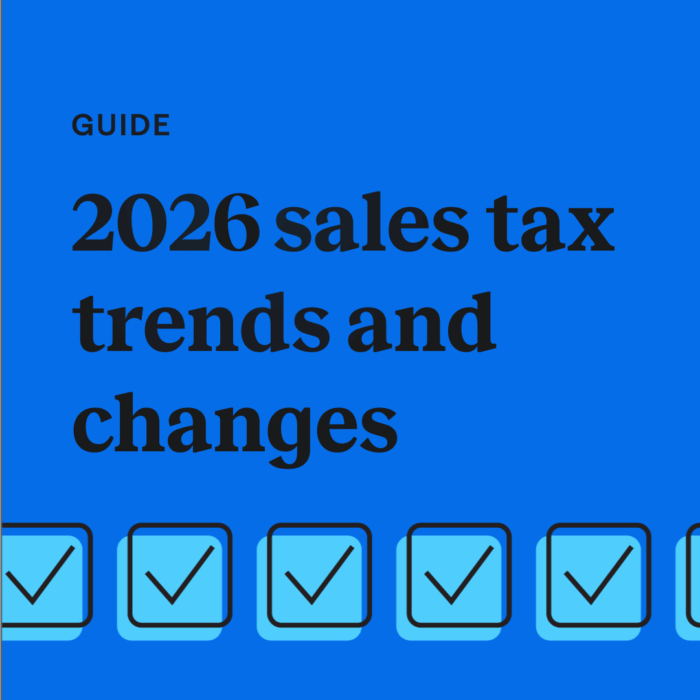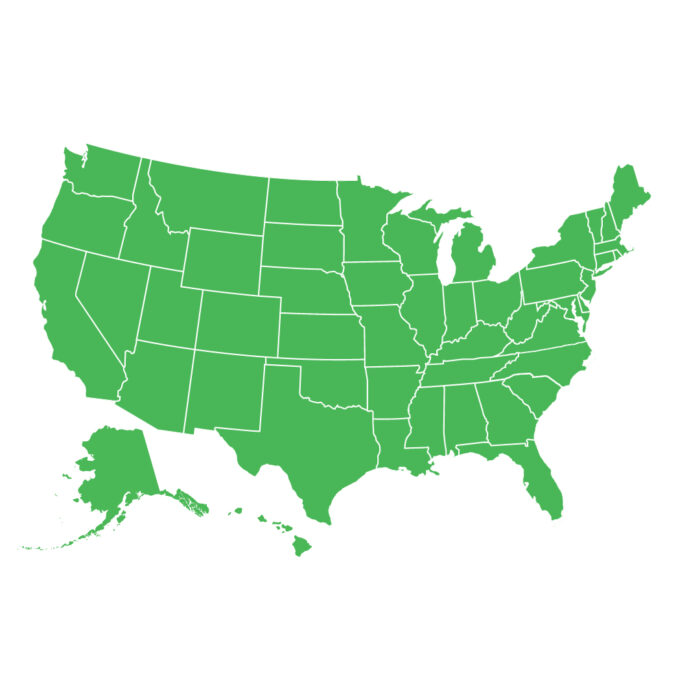How to interpret sales tax laws
by February 11, 2025
If you’ve read a book originally written in a language other than English, you’ll notice that a translator is typically credited. But some books have been translated by hundreds of different translators over time, and each translator has different viewpoints on what exactly was meant by the text written by the original author.
Sales tax isn’t much different. Each state sets its own rules and regulations – and if you have experience with sales and use tax – you won’t be shocked to hear that some of those rules can be interpreted in multiple ways. While there are some basics that almost everyone in the sales tax universe agrees on, there’s plenty more in a gray area.
To dive into these areas and help you make better sense of the sales tax landscape, we spoke to Monika Miles, sales tax expert and CEO of Miles Consulting Group, who helps companies doing business across state lines with their multi-state tax needs.
Digital products
If your company sells SaaS, it doesn’t seem like there’s a gray area when it comes to product taxability at all. You can simply consult our blog post about which states tax SaaS and determine whether you need to collect and remit there. But as with anything tax-related, the devil is in the details. That’s why it can be helpful to work with a consultant with an expertise in state and local sales tax.
Miles illustrates how complicated things can get for companies selling digital products and services. “I have a client who developed a product on a platform that they charge a subscription for – so you’d think it sounds like SaaS,” Miles notes. “It’s a platform that people can utilize. But the way their customers interact with that product, it looks and feels like an information service instead. Their clients aren’t really manipulating anything, they’re just looking at the resources.”
In this case, the client has multiple revenue streams, some of which can be classified as SaaS and some of which are information services or data processing. This can lead to the same exact product being taxed differently depending on the state. “We dug deep into what the client did and what they delivered to the customer, and we looked at the tax laws in the different states,” Miles says. “What did the state say about SaaS? What about information services? What’d they say about data processing, and which [product category] did it fit into in which state? The same product that the company might sell in California might be taxed and categorized differently in another state.”
And because it’s critical for a company to correctly categorize their products and services in order to stay compliant, Miles and consultants like her dig even deeper into a business to make sure she gets it right. In cases like this, she’s looked at the statutes, ruling requests and regulations issued by a state’s department of revenue pertaining to SaaS and information services. “Even within one state, sometimes it’s going to be really straightforward,” she explains. “But in an area that might not be, we’d look to see if there’s any case laws or rulings that might have a similar fact pattern. Then we’d get down to drawing a conclusion.”
Companies can approach a state to lay out a case for why they’re categorizing products or services a certain way and ask for a ruling. Miles says that states will often come back with a ruling – and even though that ruling may not always be binding – it does significantly help clear up some of the gray areas, giving them an understanding of how a state might review their particular fact pattern.
Sales tax obligations
If your company diligently tracks its sales tax obligations, it’s abundantly clear when you’re obligated to begin collecting and remitting sales tax to a given state. But oftentimes, growing brands don’t treat sales tax as something they need to worry about until they’ve triggered sales tax liabilities in multiple states.
“I have this type of conversation with clients everyday,” Miles explains. “They’ll tell me that they want to register in a state because they think they have nexus.” Instead, Miles first advises a deeper look into their tax situation to see if there’s any past liabilities, because if the company wrongly states their registration date, there can be steep consequences. “Clients sometimes think they can just select an arbitrary date for nexus creation and move forward from there,” she says. “I remind them that they are signing the registration form under penalty of perjury. As painful as the retroactive lookback might be, it’s important to be truthful about the start date in a given state.”
Companies may conduct a nexus study and discover they have tax liabilities. Faced with the need to register in one or multiple states, the next step is typically either backdating their registration or filing a Voluntary Disclosure Agreement (VDA) with the state – the pros and cons of which you can learn more about in this helpful blog post. Keep in mind that because there are financial implications to taking such an action (detailed below), we recommend consulting with sales tax experts before attempting either route.
While figuring out which route to take is a gray area, Miles says there are some general rules of thumb to consider. “A voluntary disclosure agreement is recommended for companies that have a larger exposure,” she explains. “Let’s say your company owes $100,000 and you want to come forward and take care of that. The reason you’d want to do a VDA in a case like that is because states will generally waive penalties, which can be as high as 20%. In some states they’re a bit more. If you do a VDA, they typically won’t assess a penalty because you agreed to come forward voluntarily and pay your liability. For that, the state will reward a company with limited lookback and penalty waives.”
For companies that choose to register and back-file their returns, they typically find it’s less expensive and may only take between 2-4 weeks to complete (whereas VDAs can take between 3-6 months on average, according to experts at HOST). And while penalties are not statutorily waived in a registration and back-filing process (VDAs mostly include penalty waivers), executing it may cost that company less on the whole. That’s because working on a VDA is time-intensive for a sales tax consultancy to complete, whereas backdating registration is a much less time-consuming process – one that typically ends up being less expensive to perform.
Automation can help
Sales tax compliance doesn’t have to be a pain point for growing companies. That’s why we built TaxJar. Our sales tax platform will help you track your nexus requirements and automatically calculate the accurate amount of sales tax for every item, in every state. And while TaxJar automates filing and remittance, it’s still important to understand your own nuanced product offering and how it’s taxed.
Our platform also compiles orders from all your e-commerce channels into one palace, giving your team access to real-time reports and ensuring you are prepared for growth. And with TaxJar’s AutoFile, our platform can prepare and file an accurate return along with your remittance. To learn more about TaxJar and get started, start a free, 30-day trial today.








